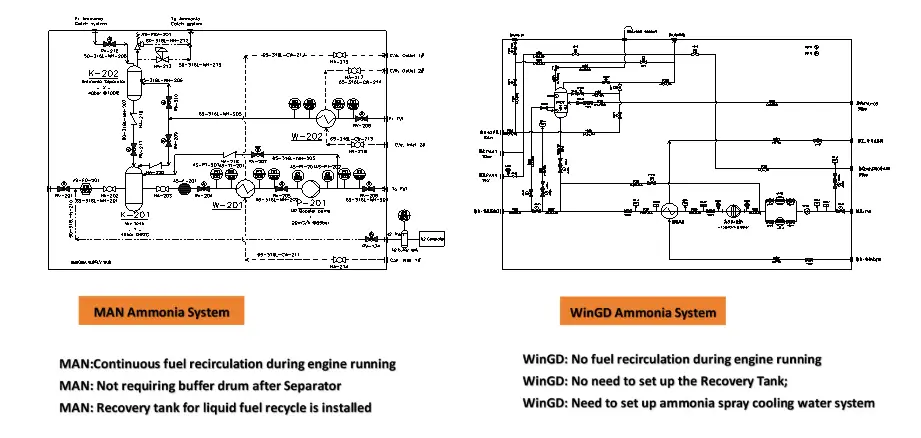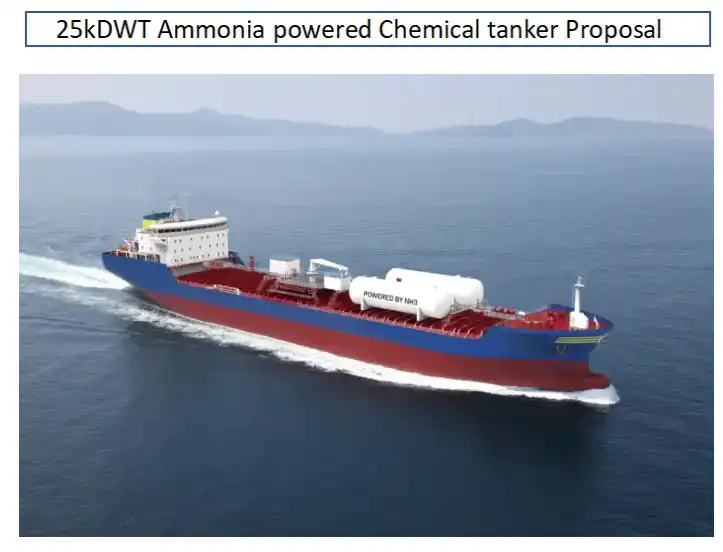Ammonia Fuel Flow Control Unit
Overview of the Ammonia Fuel Flow Control Unit
The Ammonia Fuel Flow Control Unit consists of several essential components, such as the filling and storage system, the Ammonia Fuel Supply System (AFSS), the Fuel Value Unit (FVU), the venting system, the Ammonia Release Management System (ARMS), the ventilation system, the inert gas system, the engine’s internal ammonia fuel system, and the safety system. It is important to recognize that notable differences exist between the systems utilized by MAN and WinGD.

Why Choose Us?
1. Unrivaled Industry Expertise – Having accumulated vast experience in the design and construction of dual-fuel vessels, liquefied gas carriers, chemical tankers, and their associated systems, we have positioned ourselves as a leading force in the industry.
2. End-to-End Service Offering – Our wide-ranging services cover Methanol Fuel Supply Systems (MFSS), LNG Fuel Supply Systems (FGSS), Ammonia Fuel Supply Systems (AFSS), and LPG Cargo Handling Systems (CHS), all delivered under one roof.
3. Proven Delivery Excellence – With 19 successful installations of clean fuel supply and cargo handling systems, we have earned a solid reputation for reliability and quality.
4. Innovative AFSS Development – By leveraging our deep expertise in ammonia carrier construction and LPG retrofit projects, we independently develop ammonia fuel supply systems and actively participate in zero-carbon research initiatives.
5. Holistic Lifecycle Support – From design through manufacturing and final installation, we provide comprehensive support, extending to the construction of multiple units as well as extensive post-sales service.
Product Specifications

Product Features
1. Safety Combined with Efficiency – The Ammonia Fuel Flow Control Unit is engineered to ensure both safe and efficient ammonia bunkering and storage, strictly adhering to low-flashpoint fuel standards and IMO regulations, while addressing marine-sector ammonia fuel requirements.
2. Advanced Flow and Safety Management – Designed to offer accurate flow regulation, the system integrates sophisticated safety functions such as emergency shutdowns, leak detection, and inert gas system compatibility to safeguard operations.
3. Environmental Responsibility – Focused on reducing ecological impact, the system includes vapor management technologies like thermal oxidation and re-liquefaction to handle ammonia safely, particularly within low-pressure storage environments.
4. Ventilation and Hazard Control – Robust ventilation is provided for both above-deck and enclosed spaces, while inert gas technologies are incorporated to mitigate explosion risks in potentially hazardous zones.
5. Pressure Regulation Capabilities – Through the inclusion of sub-cooling or re-liquefaction units alongside thermal oxidation systems, the system effectively controls ammonia vapor pressure in low-pressure tanks, enhancing operational safety.

Installation Process
1. Review Vessel Design – Start by carefully examining the vessel’s design and the system interface requirements, ensuring all technical uncertainties are resolved before moving forward.
2. Pre-Installation Preparation – Prior to installation, confirm that all tools, equipment, and safety protocols are in place and ready for deployment.
3. Component Transportatio – Utilize suitable lifting devices to transport the pre-assembled fuel supply system module to the installation location, ensuring accurate positioning at the designated mounting point.
4. Module Securing – Firmly fasten the module base to the vessel’s structure, ensuring correct alignment and stability in line with the design parameters.
5. System Connection – Link the fuel transfer lines, auxiliary piping, and control systems, verifying the functionality of all electrical and sealing components.
6. System Commissioning – Execute both individual and integrated debugging procedures to validate the performance of all subsystems, including bunkering, fuel delivery, and safety monitoring operations.
For more product information about Ammonia Fuel Flow Control Unit, please leave a message below.

